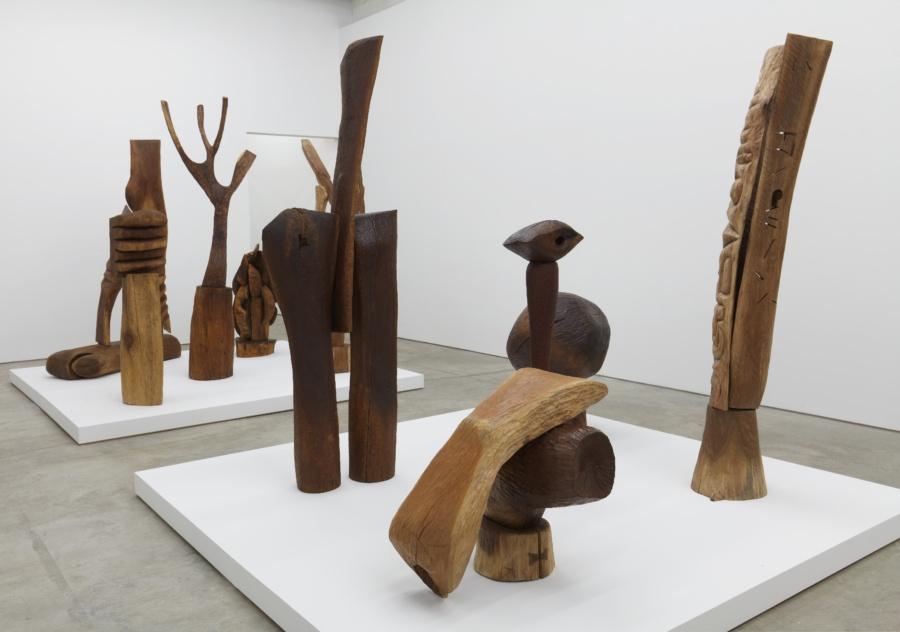April 2020
Download as PDF
View on Artforum

Installation view of Thaddeus Mosley, 2020.
Though he was a member of the NAACP and an editor at the renowned African American newspaper the Pittsburgh Courier, abstract sculptor Thaddeus Mosley never quite aligned himself with black revolutionary artists and writers such as Amiri Baraka or Dana Chandler. Nor is he a modernist in the manner of Alberto Giacometti and Isamu Noguchi. But he was friends with all of them. At ninety-four, Mosley is still busy in the studio for upward of six hours a day (he stopped doing twelve-hour shifts when he was ninety-one). The artist worked for the US Post Office for forty years in order to support himself and his family. Yet despite having a vast exhibition record and the early support of Leon Arkus, a former director of the Carnegie Museum of Art in Pittsburgh, he remains relatively unknown.
In 1978, Mosley was commissioned by Pittsburgh’s Urban Redevelopment Authority to make a public work. The monumental sculpture, The Phoenix, 1979, now stands in the city’s Hill District—a historically black area that continues to struggle against Pittsburgh’s misguided attempts at redevelopment. Architect David Lewis, who nominated Mosley for the project, has noted that the sculpture, carved from a single piece of cedar, “never ceases to be a tree.”
Using fallen logs sourced from Pittsburgh’s Forestry Division—walnut, cherry, sycamore—Mosley’s imposing “sculptural improvisations,” as he calls them, are precarious yet solid, with visible carving marks and inlaid joints. At Karma, many of these works are more than seven feet tall and outfitted with stumps that function as pedestals. Some have titles that poetically allude to their forms, including Curved Suspend, 2013, and Oval Continuity, 2017. Others seem like tributes: Take Totem for Nabta Playa, 2016, which references a region in Egypt that is also an ancient astronomical observatory—the earliest of its kind. Much like the weathered stones of the site’s calendar circle, Mosley’s totem could likewise withstand the test of time. Perge Modo, 2005, a horizontal log topped with a pair of curvy, scalloped figures, takes its name from a phrase in Virgil’s Aeneid, which translates to “Only go on” or “Keep moving forward.”



